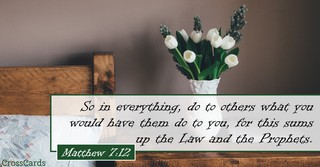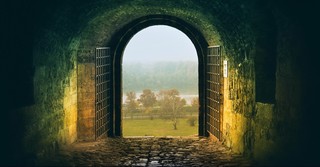- Recent Translations
- All Translations
Mǎtaìfúyīn 7:13
Share
Settings
Mǎtaìfúyīn 7:13 Meaning and Commentary
Enter ye in at the strait gate
By the "strait gate" is meant Christ himself; who elsewhere calls himself "the door", ( John 10:7-9 ) as he is into the church below, and into all the ordinances and privileges of it; as also to the Father, by whom we have access unto him, and are let into communion with him, and a participation of all the blessings of grace; yea, he is the gate of heaven, through which we have boldness to enter into the holiest of all by faith and hope now; as there will be hereafter an abundant entrance into the kingdom and glory of God, through his blood and righteousness. This is called "strait"; because faith in Christ, a profession of it, and a life and conversation agreeable to it, are attended with many afflictions, temptations, reproaches, and persecutions. "Entering" in at it is by faith, and making a profession of it: hence it follows, that faith is not the gate itself, but the grace, by which men enter in at the right door, and walk on in Christ, as they begin with him.
For wide is the gate, and broad is the way, that leadeth to
destruction;
so that the one may be easily known from the other. There is no difficulty in finding out, or entering in at, or walking in the way of sin, which leads to eternal ruin. The gate of carnal lusts, and worldly pleasures, stands wide open,
and many there be which go in thereat;
even all men in a state of nature; the way of the ungodly is "broad", smooth, easy, and every way agreeable to the flesh; it takes in a large compass of vices, and has in it abundance of company; but its end is destruction. Our Lord seems to allude to the private and public roads, whose measures are fixed by the Jewish canons; which say F16, that
``a private way was four cubits broad, a way from city to city eight cubits, a public way sixteen cubits, and the way to the cities of refuge thirty two cubits.''
F16 T. Bab. Bava Bathra, fol. 100. 1, 2. Vid. Maimon. & R. Sampson in Misn. Peah, c. 2. sect. 1. & Maimon in Sabbat. c. 1. sect. 1.


